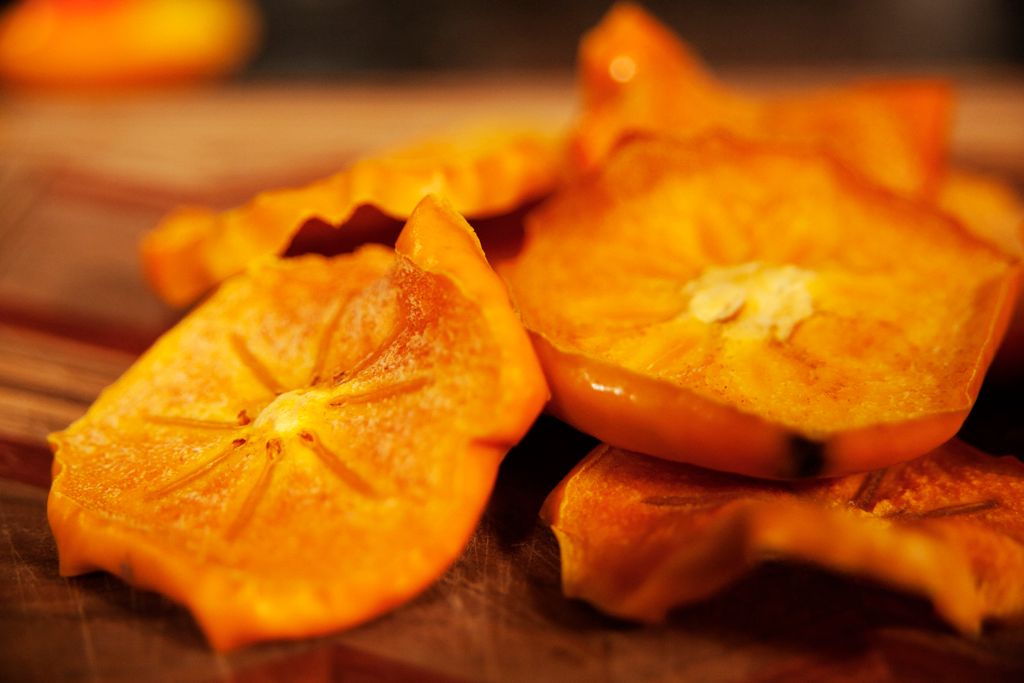All About Persimmons

Persimmon trees are great fruiting additions to your backyard garden, and the fruit makes a delicious, healthy snack for the whole family. I love growing fruit trees in my yard, and the persimmon tree is both attractive and easy to maintain in most climates. In fact, varieties of American persimmon (like Prok and Yates) are native to North America, so they naturally fit right in!
Persimmon Tree Types

There are 2 common types of persimmons:
Some Asian varieties (like Tanenashi) and all American varieties (Prok, Yates) are astringent, meaning the fruit has a "dry" and "bitter" puckering appeal – until the fruit is fully ripe. American persimmons tend to soften and fall off the tree as a sign that they're fully ripe.
Certain Asian persimmon varieties, like Fuyu, Ichi-Ki-Kei-Jiro, and Saijo, are not astringent; they can be eaten when they are firm and still be sweet. When ripe, they can be enjoyed straight from the tree. I like to use Asian varieties for dehydrating and snacking, but I love to grow American persimmons in my garden for fresh eating as well.

Both types are low maintenance and available to order from Stark Bro’s. They will come in 4"x4"x10" temporary EZ Start® pots and take 3-5 years to produce a generous harvest. Most persimmon trees will grow between 20-40 feet, but the "Ichi" stays dwarfed at around 10 feet tall.
Planting Persimmon Trees
Persimmon trees prefer a well-drained, more neutral soil and full sun exposure, though a little shade is fine. Don’t be alarmed by the dark color of the roots and trunk – persimmons have almost black wood and are often substituted for ebony! That (and the unusual bright-orange color of the fruit) are just a few reasons I love to see them in my yard. New transplants will need regular watering until they adjust to the soil conditions but, once they take, they will be fine on their own. In 3-5 years, your trees will be ready to harvest!
Dehydrating Persimmon Fruit
My favorite way to eat persimmons is dried – as a fruit snack. They're loaded with Vitamin A and are a traditional remedy for all sorts of stomach and digestive problems. Just slice them up thinly and evenly, and lay them on a sheet of parchment paper in a dehydrator. You want them all to be the same thickness so that they'll dry evenly and at the same time.
You can get a dehydrator online for around $40, and they come with a guidebook that will tell you which settings to use, and for how long. But you will typically need to let persimmon fruit dry for about 7-8 hours or overnight. When you take them out, you'll have a delicious and healthy snack! I store them in airtight containers and send them with my daughter as a snack during lunch.
Grow Your Own Persimmon Trees
 On Sale
This variety is not compatible with your location
On Sale
This variety is not compatible with your location
 On Sale
This variety is compatible with your location
On Sale
This variety is compatible with your location
 On Sale
This variety is compatible with your location
On Sale
This variety is compatible with your location
 On Sale
This variety is compatible with your location
On Sale
This variety is compatible with your location
 On Sale
This variety is compatible with your location
On Sale
This variety is compatible with your location
 On Sale
This variety is not compatible with your location
On Sale
This variety is not compatible with your location
 On Sale
This variety is compatible with your location
On Sale
This variety is compatible with your location
Guest author, Patti Moreno


